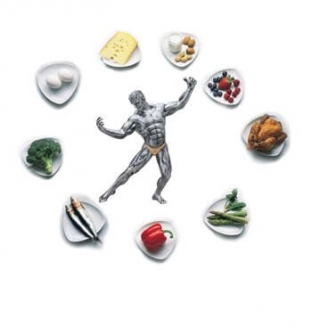There is evidence that the release of the hormone cortisol prevents the formation of muscle mass in the human body. Therefore, people who are professionally involved in bodybuilding and are busy gaining this mass are trying to reduce the release of this hormone into the blood.
However, the effect of cortisol on the accumulation of protein in the body is not as clear as it seems at first glance, emphasizes estet-portal.com. We propose to understand this issue together and understand its role in the formation of the human muscle frame. What does cortisol do?
What is the hormone cortisol
Cortisol is produced by the adrenal glands and is "destructive" hormone. It is usually produced along with adrenaline during periods of stress in the body. Moreover, in this case, both physical and emotional stress are considered. It is designed to¸ for our body to successfully cope with stress. Under heavy loads, it prevents the blood sugar from dropping to a minimum critical level.
When cortisol is produced, the process of protein breakdown is triggered and it has an effect on reducing its synthesis.
This happens when alternative sources of energy are used, provided that all the free glucose in the body has already been used. This can happen when:
- prolonged fasting,
- too intense training.
Therefore, some athletes try to reduce the intensity of the load so that the muscle mass of the body gained with such difficulty is not destroyed. However, if you study the effect of cortisol in the long term, you get very different results.

Read also: Cortisol in the body: when a friend becomes an enemy
How to train to reduce cortisol release
Experts have found that if you train hard enough for one hour, you will begin to produce cortisol. In addition, testosterone and growth hormones are released into the blood.
Scientists conducted an experiment on the effect and intensity of the load and the nutrition system on protein breakdown, i.e. loss of lean body mass. There were 4 groups of volunteers who drank during training:
- plain water,
- carbohydrate drinks,
- drinks with added amino acids,
- protein-carbohydrate blends.
The result is as follows. Consumer amino acids and carbohydrate drinks have lost some protein. In those who drank water, the protein collapsed as much as possible. But for those who drank the carbohydrate-protein mixture, the loss of muscle mass was minimal.
 For cortisol, the water group increased its production by 54% in a half-hour workout. In the group that used amino acids, its production did not change, while in those consuming a carbohydrate-protein shake, on the contrary, it decreased by 27%
For cortisol, the water group increased its production by 54% in a half-hour workout. In the group that used amino acids, its production did not change, while in those consuming a carbohydrate-protein shake, on the contrary, it decreased by 27%
With this experiment, scientists proved that if the body receives glucose from the outside during stress, it does not use its internal reserves. Therefore, we can say. With the right approach, you can build muscle even with very intense loads. The main thing is to adjust your diet.
Exercise Intensity and Cortisol Release
Despite this state of affairs, even the group that drank water, exercised for 12 weeks, gained 2 kg of lean body mass. This suggests that, despite the breakdown of protein, the effect of cortisol on muscles is quite short-term. It just slows down the recruitment process a bit, but doesn't completely cancel it out.
Therefore, the release of such a hormone should not be taken as the destruction of lean body mass, but as an indicator of a good training intensity.
So don't be afraid to train for more than one hour. However, it is also not worth bringing yourself to exhaustion. 2 hours – will be a heavy burden. Therefore, make your own training schedule and take carbohydrate-protein shakes with you for their productivity. This will increase the intensity of the loads, and "restrain" cortisol production.
Pay attention to nutrition and the strength of the load, and you will be able to minimize the effect of cortisol on muscle mass, while gaining the necessary volume, agrees estet-portal.com.






Add a comment